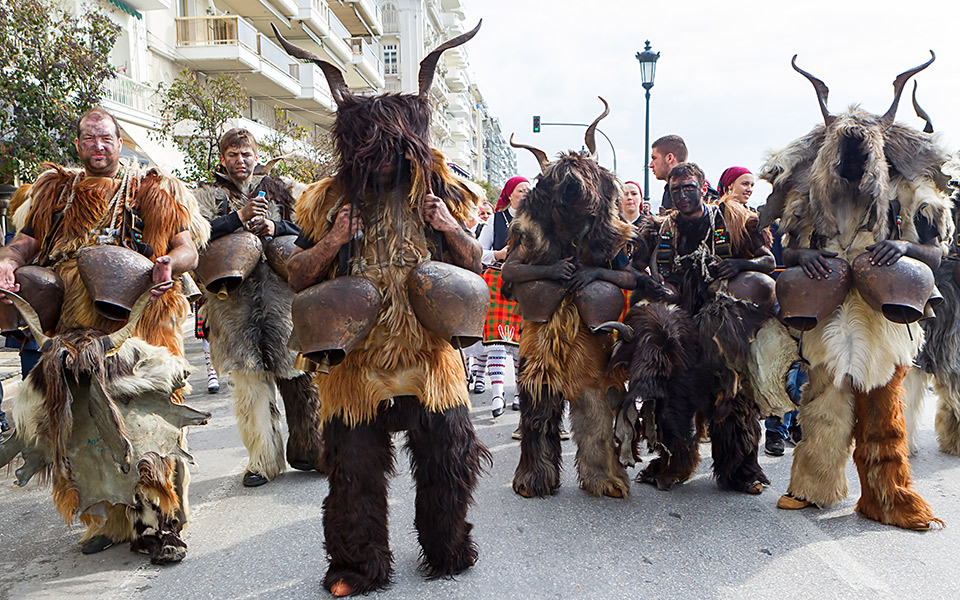
During carnival (“apokries”) surreal festivities take place all over Greece. Colorful parades, masquerade parties, street theater performances and local fertility-promoting rites with pagan roots, are all held in the weeks leading up to Lent, with the biggest events taking place on the last weekend before Clean Monday (which this year falls on February 19th).
While the most famous place to visit during this weekend is Patras which hosts Greece's biggest parade, many towns and villages have fascinating and colorful local traditions of their own, each one intimately tied to the character and history of the place.
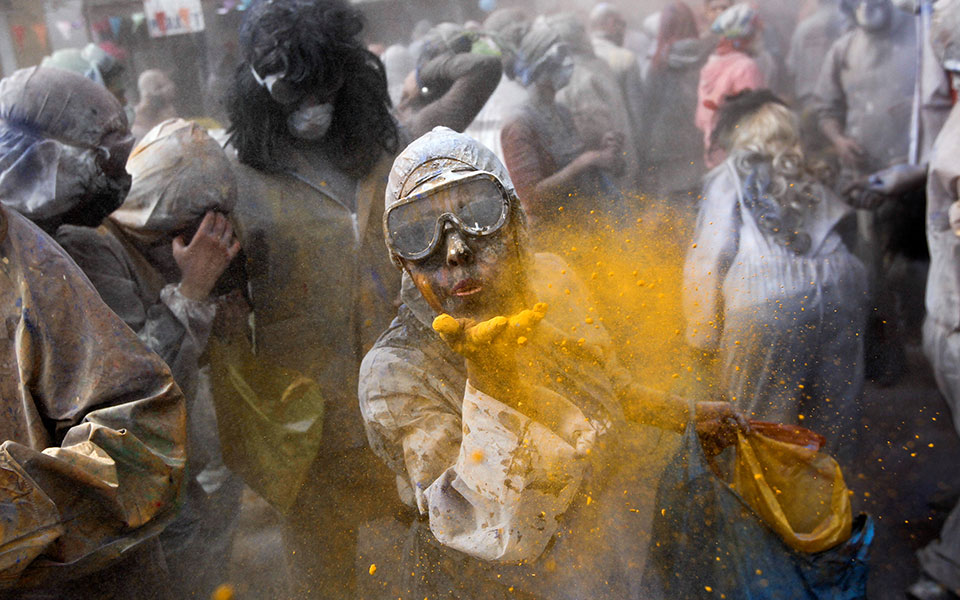
Galaxidi
Elegant Galaxidi ends up a mess on Clean Monday, as an 'alevropolemos' (flour war) takes place to the sounds of 'daoulia' (traditional hand-held drums) and 'pipizes' (traditional high-pitched flutes). Anybody requiring additional ammunition may be resupplied at the local bakeries and makeshift stalls. In more recent years, participants have added color to the spectacle in the form of powders in shades of electric blue, yellow and red. Many flour-covered individuals opt to bring the mayhem to an end by diving into the cold sea for an instant wash.
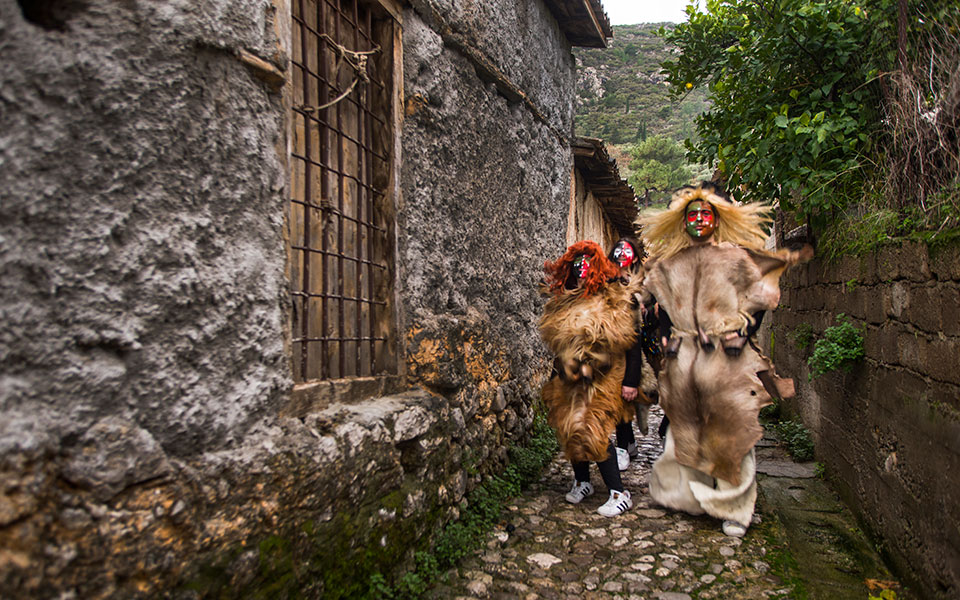
Amfissa
The “Night of the Spirits”, a ceremony involving roughly 3,500 participants dressed as bizarre, supernatural creatures, takes place on the Saturday in the town center. The next day extremely tall, human-like beasts engage in the “Battle of the Spirits”. This ritual includes many ancient aspects and can be frightening at times. To ease any fears, organizers generously treat spectators to a range of local products, including wine, tsipouro (pomace brandy), the region’s renowned olives, boiled goat stew, and fasolada (bean soup).
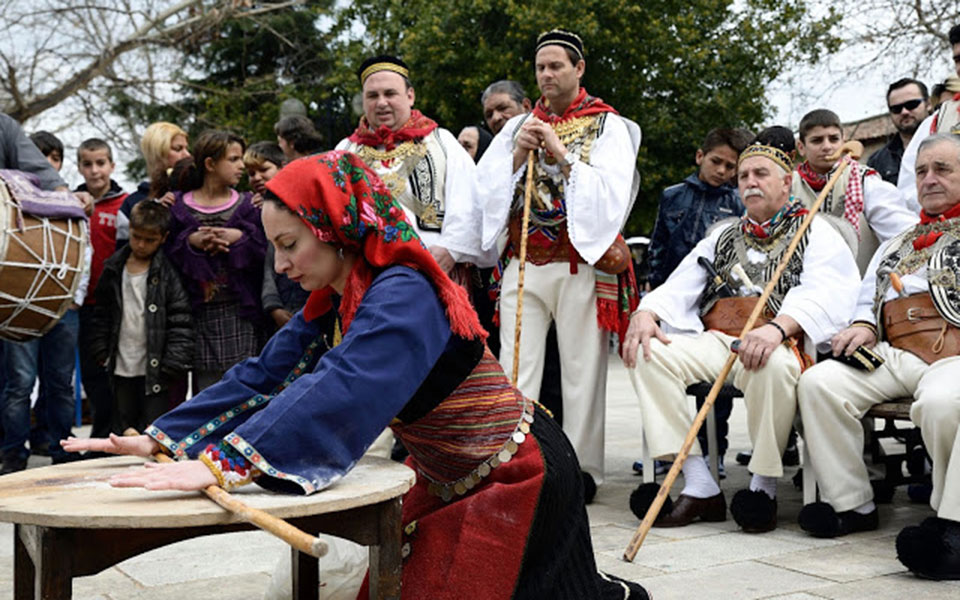
Thiva
A traditional wedding reenactment fuses Thiva’s ancient Dionysian past with a tradition introduced by the Vlach people. Two teams accompanying the bride and groom arrive at Aghia Triada church, where the dowry and engagement of this arranged marriage (proxenio) are finalized. Various humorous events occur at this stage of the reenactment as the bride’s virginity is disputed, prompting the groom’s side to demand more dowry, all in the Vlach language, before the wedding triumphantly takes place. The groom then passes away to the sounds of laments and cries, while his ensuing resurrection, accompanied by profanities and phallic symbols, highlights the event’s fertility-linked purpose.
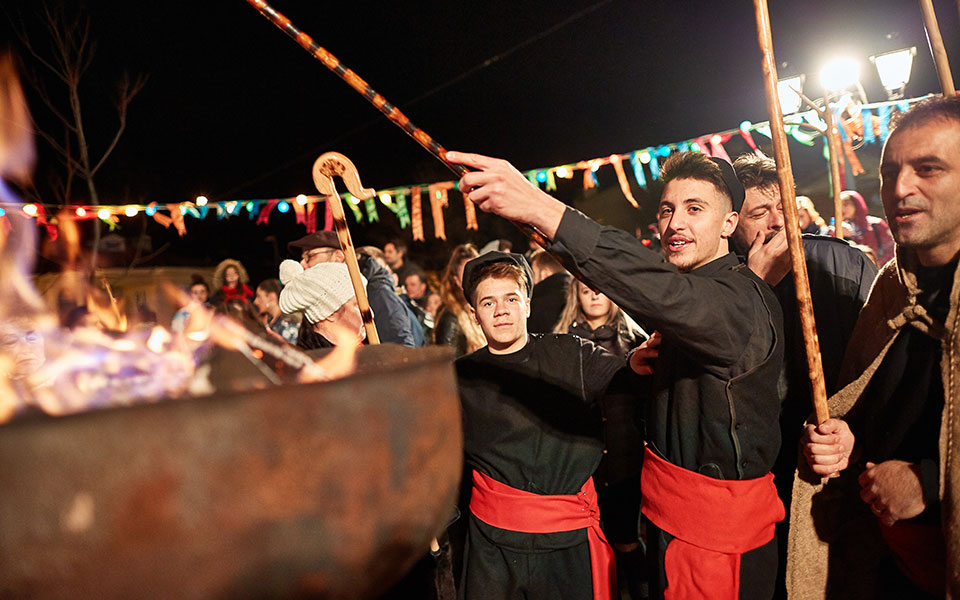
Kozani
On the last Sunday of carnival in the western Macedonian city of Kozani, fires are lit inside metal cauldrons placed at intersections. The custom is said to have emerged from the need for some form of communication between Greek freedom fighters in the mountains and their families. Centuries ago, these fires were lit with the purpose of summoning fighters to return home. Nowadays, 14 fires are organized by societies that have assumed the role of passing on the tradition from one generation to the next. The event has also developed into a contest between the societies over who can stage the biggest and longest party.
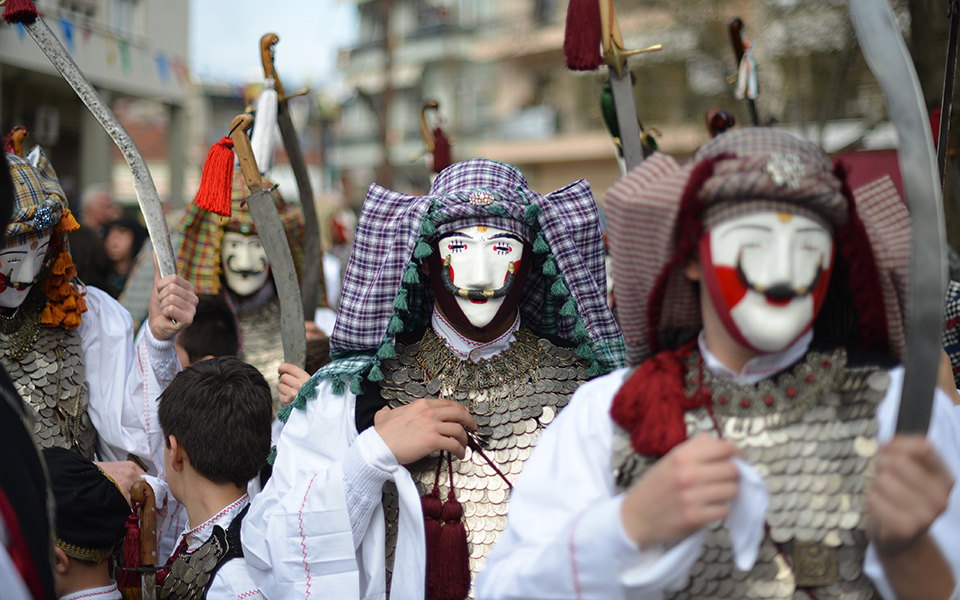
Naoussa
The Boules distinguish this celebration from other carnival festivities around the country. The Boules wear a multi-colored women’s costume that symbolizes spring and nature’s rebirth. The faces of all participants are covered by white masks made of wax or plaster. Many of the masks have been handed down from generation to generation. Some 280 persons are expected to dress up for this year’s event. Accompanied by the 'zourna' (a traditional high-pitched instrument that sounds like a clarinet) and the beat of daoulia drums, the ritual’s re-enactors parade through the old city. Dancing then follows. The performers remain silent during the ritual until their faces are revealed.
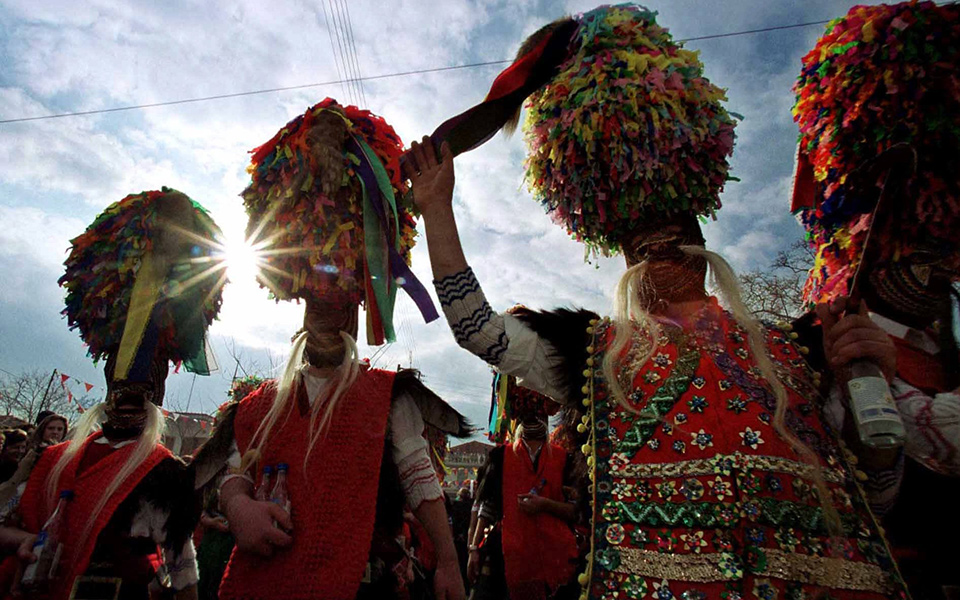
Sochos
'Kalpakia', otherworldly masks with a fox tail as a mustache and capped with a multi-colored compact ribbon formation of up to a meter in length, are the centre of attention in an ancient custom held to promote agricultural production in the town of Sohos, located on a plateau 600 meters above sea level, about 55 kilometers from Thessaloniki. The impressive attire worn by participants is complemented by goat or lamb-hide garments, tippets and heavy bells. It is worth making it to Sochos ahead of the Clean Monday long weekend in order to fully experience this authentic custom and appreciate its importance for the locals.
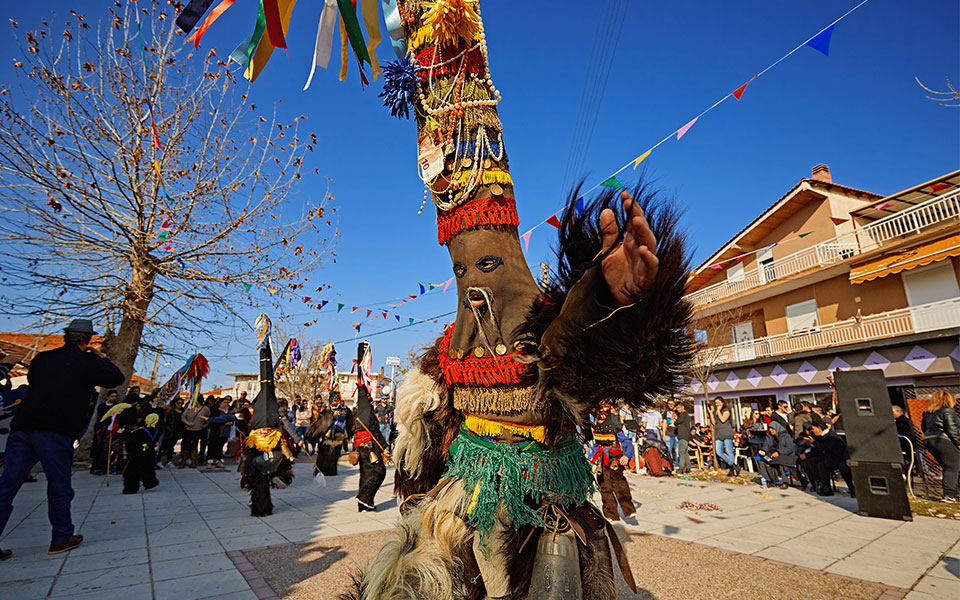
Flambouro
On Clean Monday and the Sunday before, the people in the village of Flambouro use loud bells to scare away evil spirits. Some dress in sheep skins and tall, cone-shaped, colorful hats, decorated with scarves, ribbons and beads, and dance to the sounds of the daoulia drums and the zourna (a clarinet-like instrument). Oranges topped with coins are passed between participants, an old tradition symbolizing forgiveness.
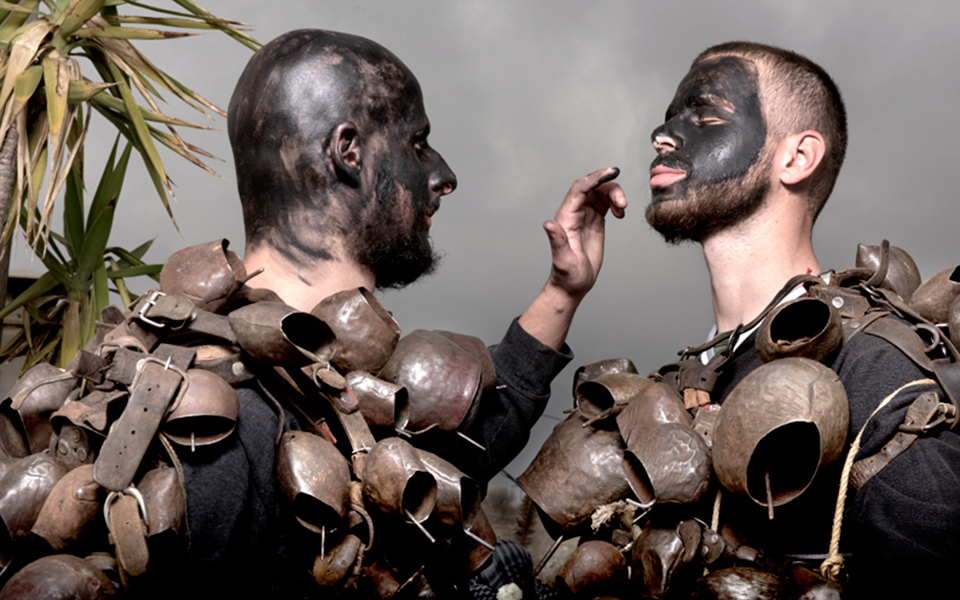
Mesotopos, Lesvos
On carnival Sunday, the sheep breeders of Mesotopos on the island of Lesvos paint their faces black and dress from head to toe in bells. On their heads they wear traditional scarves or hats made out of gourds and feathers. They are led by the Geros (old man), or the Broustanellas, who is dressed in white pajamas with a phallus drawn on them and a large bell at his crotch (he also holds a wooden phallus). The shepherds also carry phallic sticks called koutskoudes, which they tap on the ground to “wake it up” and make it fertile. The procession passes through the village until they reach the public cultural center, where it reaches its peak with a dance show with erotic overtones.
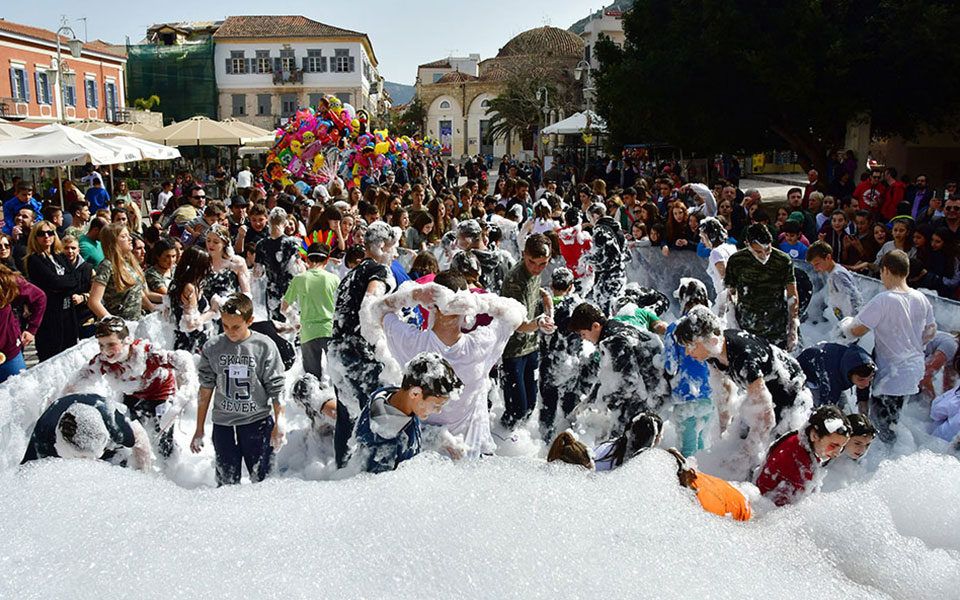
Nafplio
The three day weekend is perfect for a trip from Athens to the city of Nafplio in the Peloponnese. Being a city with many Venetian influences (it was under Venetian rule in the late Middle Ages, and much of it was built during this time), Nafplio puts on a great spectacle during carnival – especially during its final days. On carnival Saturday (17/2 this year), fires are lit and carnival goers dance the tarantella. On the Sunday, you can watch the the parade and then spend the evening in Nafplio's Syntagma Square where a latin dance show is held.










